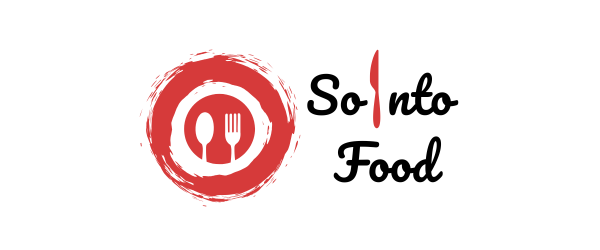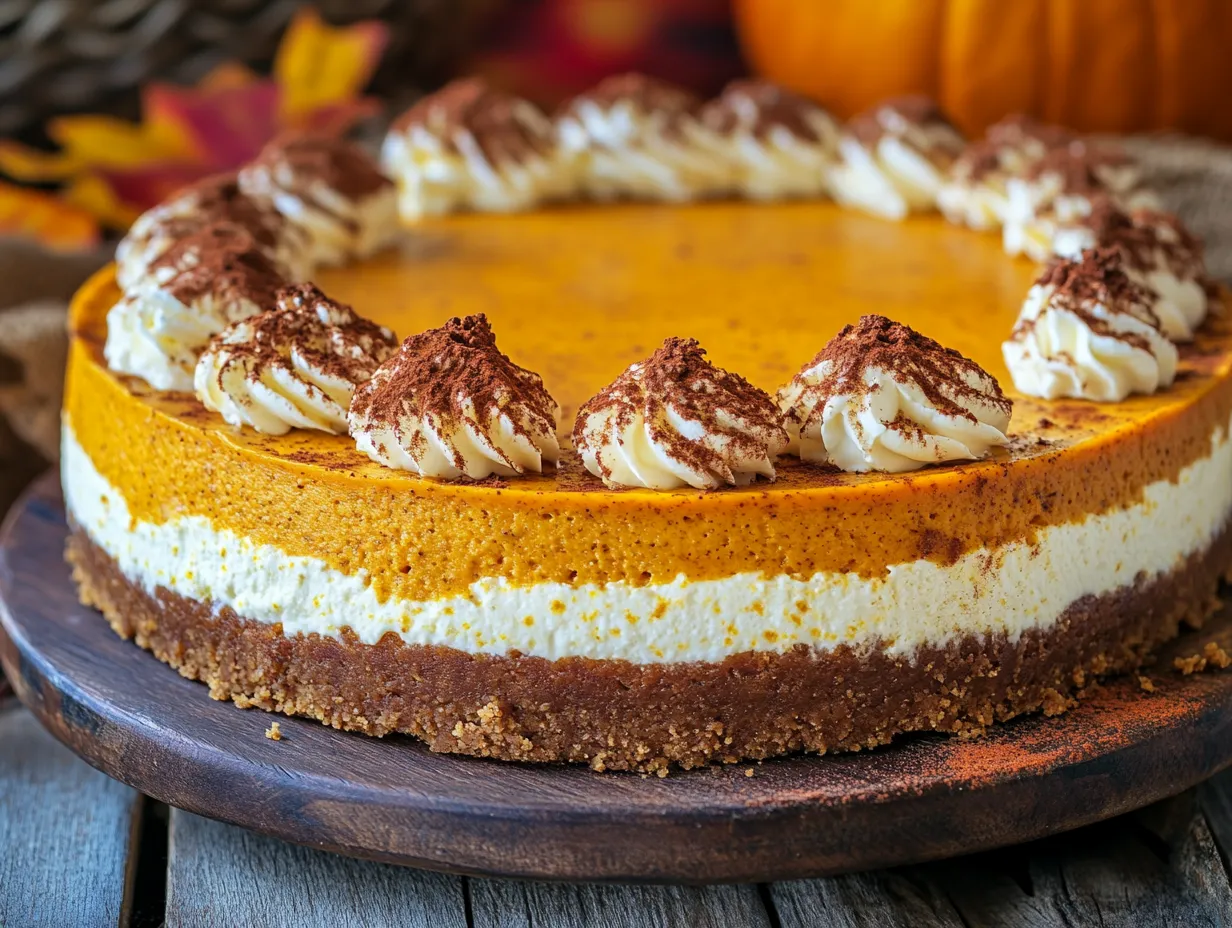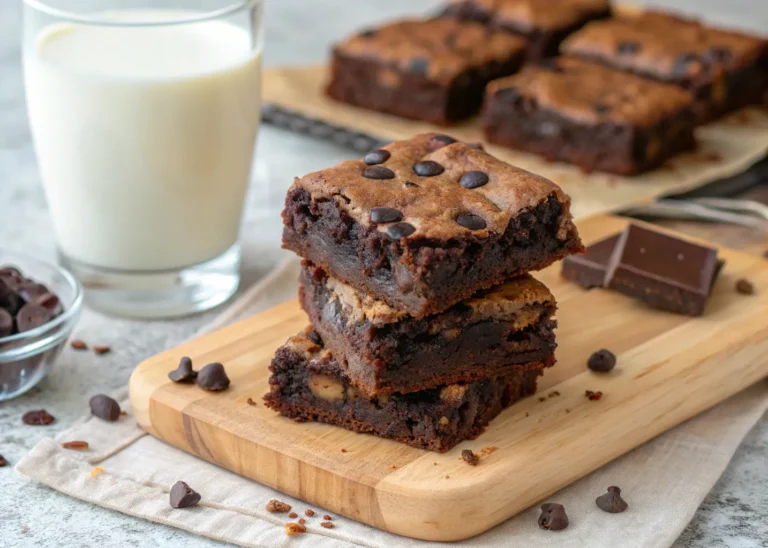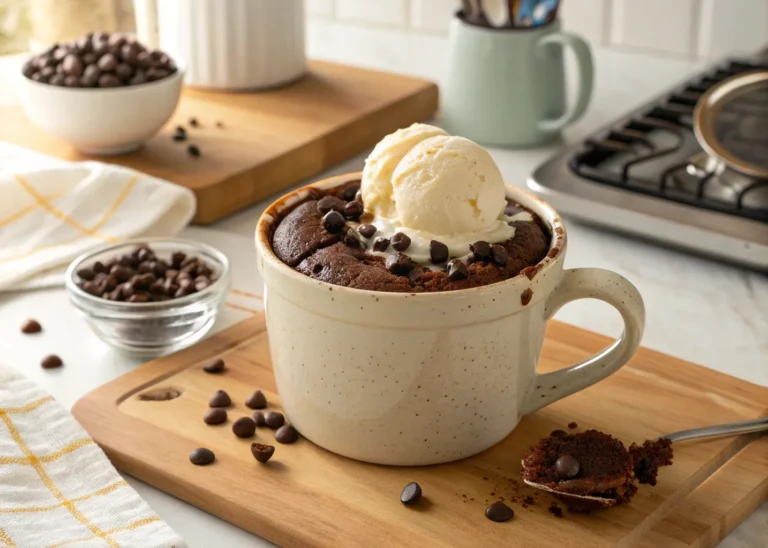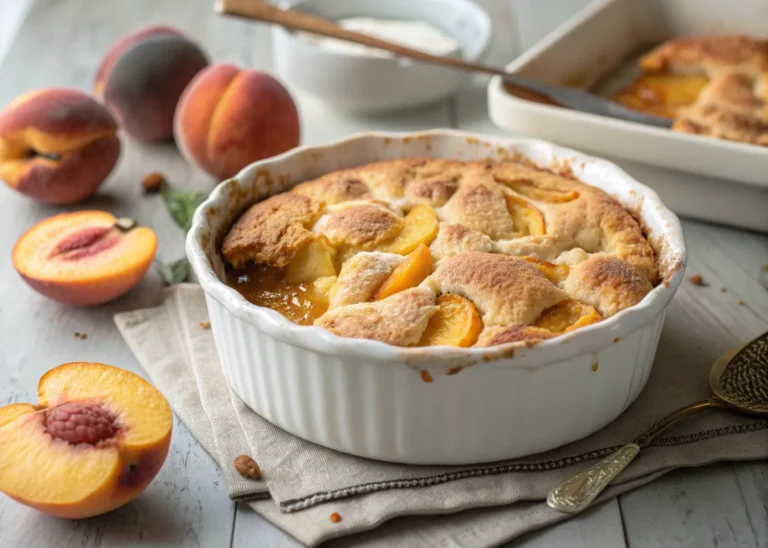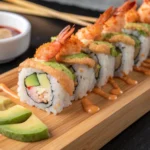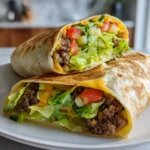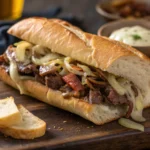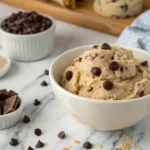I’ve tested a lot of cheesecakes over the years, but this cottage cheese pumpkin cheesecake completely surprised me—in the best way. If you’ve never used cottage cheese in a dessert before, trust me: it’s a game-changer.
This recipe came out of one of those “what if I…” moments in the kitchen, and honestly, I wasn’t expecting it to be this good. It’s got that rich, velvety texture you want in a cheesecake, the warm pumpkin spice that makes it perfect for fall, and a lighter, protein-packed base thanks to the cottage cheese.
I made it once for a weekend dinner with friends, and now it’s a staple every fall—especially around Thanksgiving. It’s a little different, a little healthier, and just plain delicious. Let me show you how to make it.
Why You’ll Fall in Love With This Cottage Cheese Pumpkin Cheesecake
A Fall Dessert That Surprised Me (and Everyone Who Tasted It)
The first time I made this, I was honestly just experimenting. I had pumpkin puree and a tub of cottage cheese in the fridge, and I wanted something cozy that didn’t feel like a total sugar bomb. What came out of the oven was way better than expected—creamy, flavorful, not too sweet, and totally satisfying.
People couldn’t believe it was made with cottage cheese.
It’s Creamy Without Being Heavy
Traditional pumpkin cheesecakes are rich, yes—but sometimes too rich. This version keeps that silky texture but lightens it up with blended cottage cheese. No one’s asking for a nap after dessert. It’s smooth, light, and still has that indulgent cheesecake feel.
Perfect for Make-Ahead Baking (and Impressing Guests)
One of the reasons I keep coming back to this recipe? You can make it a day ahead, let it chill overnight, and it actually tastes better the next day. The flavors mellow out, the texture sets just right, and your prep work is done long before your guests arrive.
Whether you’re making it for Thanksgiving, a fall dinner party, or just to treat yourself with a slice after dinner—it holds up beautifully. I’ve even frozen leftovers (rare as they are), and they defrost like a dream.
Ingredients You’ll Need (and Why They Matter)
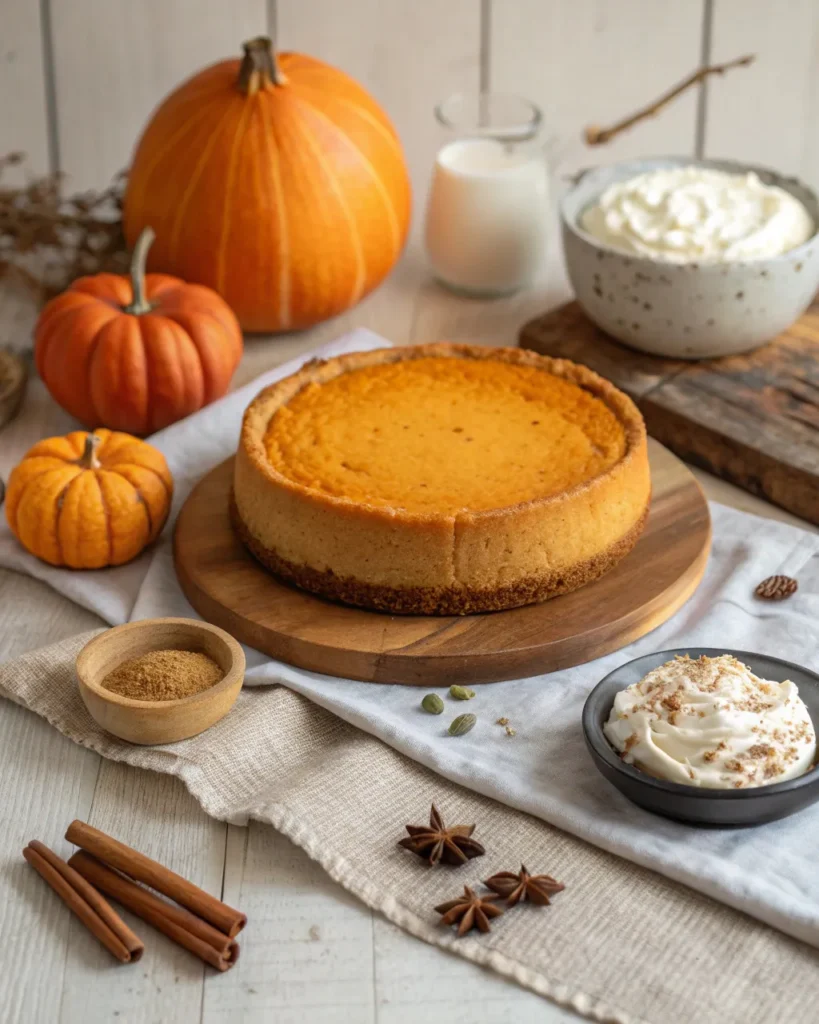
Over the years, I’ve found that the best recipes are the ones that use simple, honest ingredients — and this cottage cheese pumpkin cheesecake is no exception. You don’t need anything fancy, just a few pantry staples and a couple of fresh ingredients to pull this off.
Main Ingredients Breakdown: Cottage Cheese, Pumpkin Purée, and More
Here’s exactly what I use when I make this cheesecake. And yes, I’ve tested different versions, so I’ll include notes in case you need to swap something.
| Ingredient | Purpose | My Notes |
|---|---|---|
| Cottage Cheese | Base for the filling | Use full-fat or low-fat, but always blend it smooth before mixing. It’s the key to that creamy texture. |
| Pumpkin Purée | Flavor + moisture | Use 100% pure pumpkin—not pumpkin pie filling. I usually go with canned organic. |
| Eggs | Binder | Room temp eggs help the filling set evenly. |
| Maple Syrup or Honey | Natural sweetener | Adds just the right touch of sweetness without overwhelming the pumpkin flavor. |
| Brown Sugar (optional) | Depth of flavor | A tablespoon or two adds warmth and helps with browning. I don’t always use it, but it’s great in fall bakes. |
| Vanilla Extract | Flavor booster | Always use real vanilla—it makes a huge difference. |
| Pumpkin Pie Spice | Warmth + aroma | You can use a store blend or mix cinnamon, nutmeg, ginger, and cloves yourself. |
| Cornstarch or Arrowroot | Stabilizer | Helps thicken the filling slightly without affecting flavor. |
Optional Add-Ins & Substitutions (Gluten-Free, Sugar Alternatives)
I’ve made this with a few tweaks depending on who I’m baking for. Here are some ideas that work beautifully:
- Gluten-Free? Use a gluten-free graham cracker crust or swap in almond flour and oats for a homemade base.
- Lower Sugar? Replace the maple syrup with a monk fruit or stevia baking blend.
- No eggs? Try using flax eggs or a commercial egg replacer, though the texture will be a little less custard-like.
Don’t be afraid to make this recipe your own — just keep the base ratio of cottage cheese to pumpkin consistent.
What Kind of Cottage Cheese Works Best?
This part is important: use a small-curd, full-fat or low-fat cottage cheese, and blend it thoroughly before adding it to the filling. You want it to be smooth—no lumps. I use a food processor or a high-powered blender, and it turns out perfectly creamy every time.
Avoid fat-free versions — they’re watery and don’t bake well. Stick with the good stuff, and your cheesecake will thank you.
Curious how to make it yourself? Learn how to make cottage cheese at home and take your baking one step further.
Pumpkin Purée vs. Pumpkin Pie Filling – Know the Difference
Please don’t grab the wrong can! Pumpkin pie filling has sugar, spices, and other ingredients already added, and it’ll throw off the texture and flavor.
You want 100% pure pumpkin purée — no additives. Just pumpkin. It gives you full control over the flavor and sweetness of your cheesecake.
Kitchen Tools & Equipment Checklist
You don’t need a pro pastry kitchen to make a killer cottage cheese pumpkin cheesecake—but using the right tools makes the process easier, smoother, and way less stressful. I’ve made this recipe with the basics and with more advanced gear, and I’ll tell you what actually helps and what you can skip.
Tools You Probably Already Have
Let’s start simple. If you bake even a few times a year, you likely already have everything you need to make this cheesecake work.
- Mixing bowls – At least two: one for the crust and one for the filling.
- Whisk or hand mixer – You don’t have to use a stand mixer unless you want to.
- Measuring cups and spoons – Accuracy matters, especially with baking.
- Rubber spatula – For scraping every last bit of that creamy filling out of the bowl.
I’ve even made this with just a basic whisk and a strong arm. It works—but blending makes a big difference for the cottage cheese, which brings me to the next part…
Pro Gear That Makes Cheesecake Foolproof
If you’re looking to invest in better tools or just want that picture-perfect cottage cheese pumpkin cheesecake, here’s what’s worth having on hand:
- High-speed blender or food processor – This is key for getting the cottage cheese silky smooth. If you’ve never blended cottage cheese before, you’re about to be amazed.
- Springform pan (8 or 9 inch) – Gives the cheesecake its classic shape and easy release.
- Oven thermometer – Most home ovens run a little hot or cold. Using one helps prevent overbaking or underbaking your cheesecake.
- Cooling rack – Helps prevent soggy crust by allowing air to circulate underneath as it cools.
These tools aren’t required—but if you want to make cheesecake more than once a year, they’re smart investments.
Best Pans for Baking Cheesecake Without Cracks
Let’s talk pans. I always use a nonstick springform pan with a tight seal. You can line the bottom with parchment if you’re worried about sticking, but with a good pan and a little spray oil, you’re usually good to go.
Want to go the extra mile? Try baking the cheesecake in a water bath (bain-marie). It’s not essential for this particular cottage cheese pumpkin cheesecake, but it definitely helps regulate the temperature and gives you a super-smooth top with no cracks. Just wrap your springform pan in foil to prevent leaks.
And yes—if you’re really pressed, you can use a regular 9″ cake pan, but you’ll need to line it with parchment and scoop the slices carefully. Been there, done that.
Step-by-Step Recipe: How to Make Cottage Cheese Pumpkin Cheesecake
If this is your first time making a cottage cheese pumpkin cheesecake, don’t stress. This is one of those recipes that sounds fancy but is super approachable. I’ll walk you through it like I’m right there in the kitchen with you.
Step 1: Prepping the Crust (Graham, Oat, or Almond Base)
I usually go with a classic graham cracker crust, but I’ve also used oats and almond flour when I wanted to change things up or go gluten-free. Here’s what you need for the graham base:
Ingredients for the crust:
- 1 ½ cups graham cracker crumbs
- 2 tablespoons brown sugar
- 5 tablespoons melted butter
Instructions:
- Preheat your oven to 325°F (163°C).
- Combine the crumbs, sugar, and melted butter in a bowl, mixing until the texture resembles damp sand.
- Press it firmly into the bottom of your springform pan using a flat-bottomed glass.
- Bake for 8 to 10 minutes, then set it aside to cool as you prepare the filling.
Tip: Want extra crunch? Add a tablespoon of finely chopped nuts to the crust mix.
If you’re already a fan of cottage cheese in baking, you’ll love our blueberry cottage cheese breakfast bake—it’s wholesome, easy, and perfect for mornings.
Step 2: Blending the Silky Smooth Filling
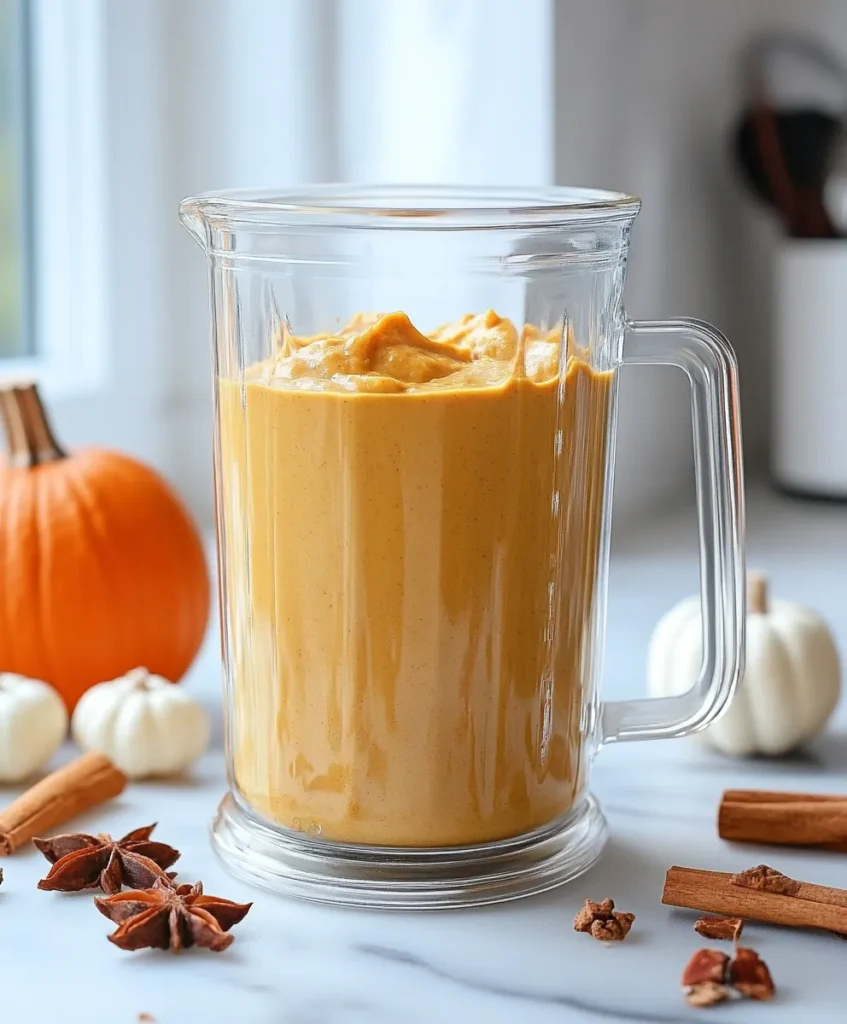
Here’s where the cottage cheese works its magic. Blend it well, and I promise no one will ever guess there’s cottage cheese inside.
Filling Ingredients:
- 1 ½ cups cottage cheese (blended until smooth)
- 1 cup pure pumpkin purée
- 3 eggs
- ¼ cup maple syrup
- ¼ cup brown sugar (optional for more depth)
- 1 tsp vanilla extract
- 1 tbsp cornstarch
- 1 ½ tsp pumpkin pie spice
- Pinch of salt
Instructions:
- Blend the cottage cheese first until completely smooth.
- Add pumpkin, maple syrup, sugar, eggs, vanilla, cornstarch, spices, and salt.
- Blend or mix until fully combined and silky. Don’t overmix—it adds too much air.
Tip: Let your eggs and cheese come to room temperature before blending. It helps with texture and even baking.
Step 3: Baking Low and Slow for a Perfect Texture
Pour the filling onto the cooled crust, spread it evenly on top, and place the pan on the center rack of your preheated oven.
- Bake at 325°F for 45–55 minutes, or until the center is mostly set but still slightly jiggly.
- Turn off the oven, leave the door slightly open, and allow the cheesecake to rest inside for 30 minutes.
- Remove and cool at room temperature, then chill in the fridge for at least 4 hours (overnight is best).
No peeking while it bakes! Sudden temperature changes are what cause cracks.
Step 4: Cooling, Chilling, and Slicing Without Cracks
Once chilled, run a knife around the edge before releasing the springform. For clean slices:
- Use a hot, wet knife and wipe it clean between each cut.
- For the best texture, serve chilled directly from the refrigerator.
Once set, this cottage cheese pumpkin cheesecake is creamy, firm, and slices cleanly.
Tips for Success – What Every Home Baker Should Know
After baking this cheesecake a dozen different ways, I’ve figured out what really makes the difference between “good” and “wow, you made this?!” Follow these simple tips to get it right every time.
How to Avoid a Soggy Crust
There’s nothing worse than a crust that gets mushy before you even slice into it. Here’s what helps:
- Pre-bake the crust for 8–10 minutes
- Let it cool completely before adding the filling
- Avoid overbaking the cheesecake (which causes moisture buildup)
If you’re using a water bath, make sure your springform pan is tightly wrapped in foil so no water seeps into the crust.
Blending Cottage Cheese for Creaminess Without Lumps
This step matters more than anything else. Cottage cheese has curds, and if you don’t blend it well, your cheesecake will be grainy.
- Use a high-speed blender or food processor
- Blend the cottage cheese by itself first before adding other ingredients
- Scrape down the sides of the bowl to ensure all ingredients are fully blended.
The result? A creamy, smooth filling that’s indistinguishable from classic cheesecake.
Chilling Time: Why It Matters
I know it’s tempting to dig in early, but don’t skip the chill. Chilling gives the cheesecake time to firm up and develop flavor.
- Minimum chilling time: 4 hours
- Ideal chilling time: Overnight (12–24 hours)
I always make this cottage cheese pumpkin cheesecake the night before. It’s one less thing to think about if you’re baking for guests.
When to Bake This in Advance (Pro Make-Ahead Tips)
Here’s what works best:
| Timeline | What to Do |
|---|---|
| 1 day before | Bake and chill overnight |
| 2–3 days before | Bake, chill, and keep covered in the fridge |
| Up to 1 month ahead | Freeze the whole cheesecake (tightly wrapped), then thaw in the fridge overnight before serving |
Make-ahead means less stress, and it actually tastes better the next day.
Variations You’ll Want to Try Next
This cottage cheese pumpkin cheesecake is one of those base recipes that’s endlessly flexible. Once you master the main version, you can tweak it to fit different dietary needs, serving styles, or even bake-free days. Here are some of my favorite variations I’ve tested (and loved).
Gluten-Free Pumpkin Cheesecake
Want to go gluten-free without sacrificing flavor? Easy.
- Use gluten-free graham crackers or rolled oats (pulse them in a food processor).
- Almond flour or ground walnuts also work great as a crust alternative.
- Just be sure to pre-bake the crust like you would with the original.
The filling doesn’t need any changes—it’s already naturally gluten-free thanks to the cottage cheese and pumpkin base.
Mini Cheesecakes in Muffin Tins
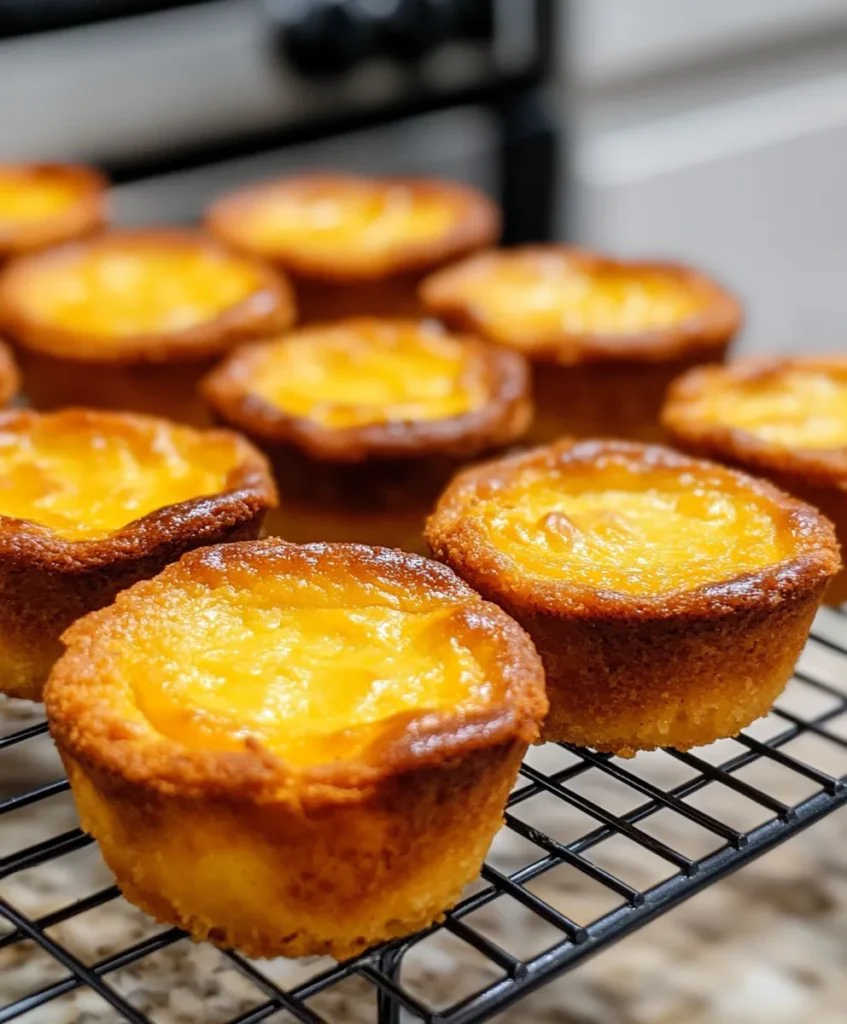
Perfect for portion control, parties, or when you don’t want to fuss with slicing.
- Line a muffin pan with paper liners.
- Press a spoonful of crust into the bottom of each cup.
- Fill ¾ full with the cheesecake mixture.
- Bake at 325°F for 18–22 minutes, until set.
Let them cool, chill, and then pop them out. These little mini cottage cheese pumpkin cheesecakes are a total crowd-pleaser.
No-Bake Cottage Cheese Pumpkin Cheesecake
When I don’t want to turn on the oven (hello, late summer pumpkin cravings), I go for the no-bake route.
- Skip the eggs and add 1 teaspoon of gelatin (bloomed in warm water).
- Blend it into the filling before chilling.
- Pour over a no-bake crust (butter + crushed oats or graham crumbs), and chill for at least 6 hours.
It’s creamy, cool, and still full of that cozy pumpkin spice flavor.
No-bake desserts are a lifesaver during warmer months. If you’re into easy prep, try our cottage cheese cookie dough for a quick, protein-packed treat.
Dairy-Free or Vegan Twist Ideas
Now, I’ll be honest—replacing cottage cheese in a cheesecake is tricky. But if you’re going for a plant-based version, here’s what I’ve tried with success:
- Use dairy-free cottage cheese (almond- or cashew-based brands work best).
- Swap the eggs for flax eggs (1 tbsp flax + 2.5 tbsp water per egg).
- Use coconut cream for a richer texture if needed.
It’s not exactly the same, but it’s a worthy alternative if you’re avoiding dairy.
Serving & Storage Ideas
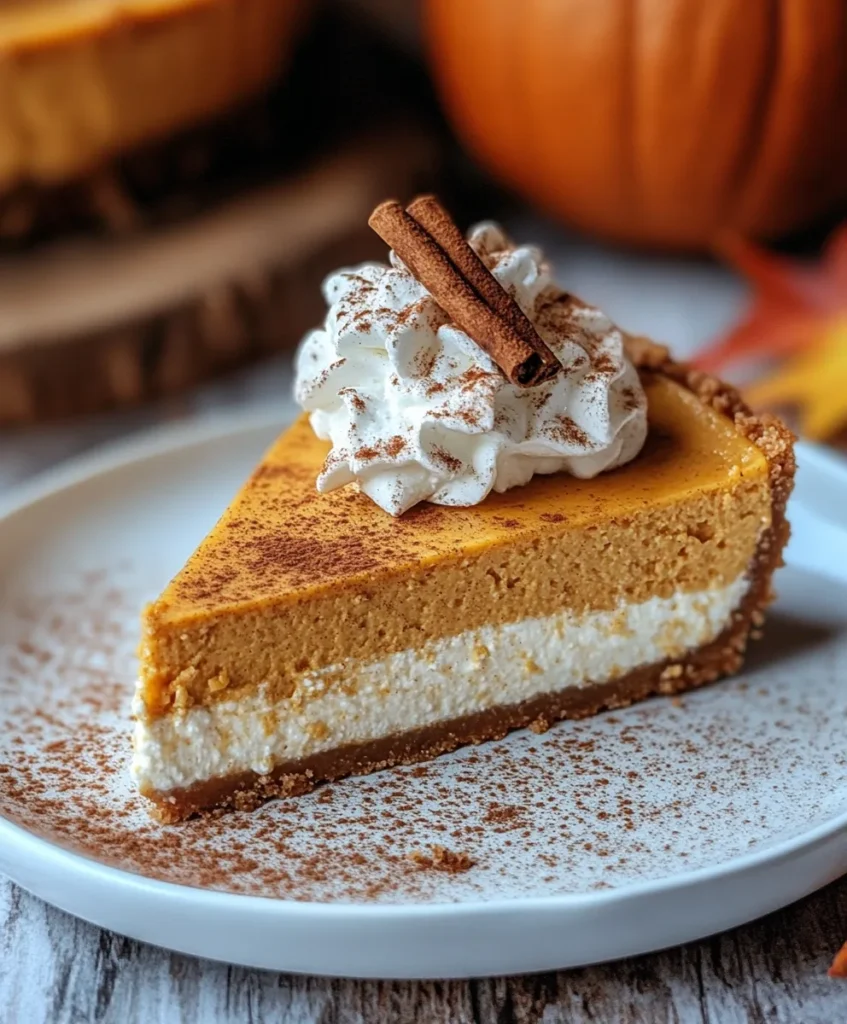
You’ve baked the perfect cottage cheese pumpkin cheesecake, let it chill, and now comes the fun part: serving it up in style. Here’s how I like to present it, what to serve alongside, and how to keep it fresh for days.
How to Garnish for That “Wow” Factor (Without Going Overboard)
This cheesecake is beautiful on its own, but if you want to dress it up a little for a holiday table or dinner party, here are my go-to garnishes:
- Whipped cream or whipped coconut cream (a little swirl on each slice)
- A dusting of cinnamon or pumpkin pie spice on top
- Toasted chopped pecans or walnuts for crunch
- A drizzle of maple syrup for extra shine
Just keep it simple—you want the pumpkin flavor and cottage cheese creaminess to be the star.
Perfect Pairings: What to Serve With It
This cheesecake is rich enough to stand on its own, but I like to serve it with:
- A hot cup of cinnamon or chai tea
- Black coffee or decaf with a splash of oat milk
- Sparkling water with a cinnamon stick and orange slice (great for holiday parties)
Trust me, it pairs beautifully with warm flavors and cozy vibes.
Looking for a chocolate option with the same creamy texture? Try our cottage cheese chocolate mousse—it’s rich, smooth, and just as simple to make.
How Long It Keeps in the Fridge or Freezer
In the fridge: Store the cheesecake (covered tightly) for up to 5 days. The texture actually improves a bit after the first day.
In the freezer: You can freeze individual slices or the whole cheesecake. Wrap well in plastic and foil, then freeze for up to 1 month.
- To thaw: Place in the fridge overnight, still wrapped, then slice and serve chilled.
This makes it perfect for prepping ahead before a big dinner or holiday event.
Best Way to Reheat or Eat Chilled
You don’t have to reheat this cheesecake—it’s best served chilled. But if you like a slightly warm texture (especially in colder months), here’s what I do:
- Slice a piece, place it on a microwave-safe plate, and microwave for 10–15 seconds max.
- It softens the texture without turning it into pudding.
Just don’t overdo it—the filling will melt if it gets too hot.
Cottage Cheese Pumpkin Cheesecake Nutrition Breakdown
Let’s talk nutrition. One of the biggest reasons I started experimenting with cottage cheese pumpkin cheesecake in the first place was to lighten things up without giving up that rich, indulgent dessert feeling.
If you’re counting macros, trying to increase protein, or just want a dessert that won’t completely wreck your day, this recipe hits a sweet spot—literally and nutritionally.
Is It Healthier Than Traditional Cheesecake?
In short: yes, absolutely.
Here’s why this version stands out:
- Cottage cheese has way less fat and significantly more protein than cream cheese.
- Pumpkin puree is naturally low in calories and full of fiber, vitamin A, and antioxidants.
- You’re using less sugar overall, especially if you use maple syrup or natural sweeteners.
- It’s baked, not fried or heavily topped—simple, clean ingredients.
Compared to a classic New York cheesecake (which can pack 500–700+ calories per slice), this recipe is lighter while still being totally satisfying.
Protein, Fat, Carbs, and Calories (Per Slice, Approximate)
Assuming 10 slices per cheesecake, here’s the estimated nutrition for one serving (based on full-fat cottage cheese and maple syrup):
| Nutrient | Amount |
|---|---|
| Calories | 230–260 kcal |
| Protein | 10–12g |
| Fat | 12–14g |
| Carbohydrates | 18–22g |
| Sugar | 10–13g |
| Fiber | 1–2g |
Keep in mind, you can easily adjust the sweetness, use low-fat cottage cheese, or swap crust ingredients to further lower calories or fat.
Great Dessert Option for High-Protein Diets
If you’re into high-protein or macro-balanced eating, this cottage cheese pumpkin cheesecake is a sneaky little win. With 10+ grams of protein per slice, it’s not your typical sugar bomb dessert.
It’s especially great for:
- Post-dinner sweet cravings without the crash
- Meal-prepping a treat you won’t feel guilty about
- Balancing holiday indulgence with real ingredients and smart swaps
Even my fitness-focused friends who usually skip dessert have come back for seconds on this one.
FAQs About Cottage Cheese Pumpkin Cheesecake
Over time, I’ve gotten a lot of questions about this cottage cheese pumpkin cheesecake—especially from first-timers who’ve never baked with cottage cheese before. So here are the most common ones, with answers that keep things simple, clear, and helpful.
Can I taste the cottage cheese in the cheesecake?
Not at all. Once blended, cottage cheese becomes smooth and mild, seamlessly blending into the texture. Most people think it’s made with traditional cream cheese—you’d never know the difference.
Can I use low-fat or fat-free cottage cheese?
Yes to low-fat, but I don’t recommend fat-free. It tends to be watery and can mess with the texture. Stick with full-fat or 2% cottage cheese for the best results—still lighter than cream cheese, but much more stable for baking.
What’s the texture like compared to cream cheese cheesecake?
It’s slightly lighter and a little less dense, but still rich and creamy. If traditional cheesecake feels too heavy, this will be a refreshing change—it’s smooth, flavorful, and easier on the stomach.
Is this recipe kid-friendly?
Absolutely. It’s not overly sweet, has no weird ingredients, and the texture is soft and smooth. I’ve served this to toddlers and teens, and they’ve all gone back for seconds.
Can I make this ahead for Thanksgiving or a party?
Yes—and I recommend it. This cottage cheese pumpkin cheesecake tastes even better after chilling overnight. Make it the day before, keep it covered in the fridge, and you’re good to go. Zero last-minute stress.
How do I make this without a springform pan?
Don’t have a springform pan? You can use a standard 9-inch cake pan—just be sure to line the bottom and sides with parchment paper. Allow it to cool fully before gently lifting it out. For an easier option, try baking mini cheesecakes in a muffin tin for ready-to-serve portions.
Try This Cozy, Creamy Cheesecake Today
If you’re craving something sweet, seasonal, and just a little different from the usual pumpkin pie, this cottage cheese pumpkin cheesecake is the move. It’s smooth, rich, and full of warm spice—but without the heaviness of a traditional cheesecake.
Whether you’re baking for a fall gathering, planning your Thanksgiving spread, or just want a healthier dessert you’ll actually enjoy—this one delivers.
If you’re into high-protein treats that still feel indulgent, you’ll love our cottage cheese brownies—they’re rich, fudgy, and secretly healthy.
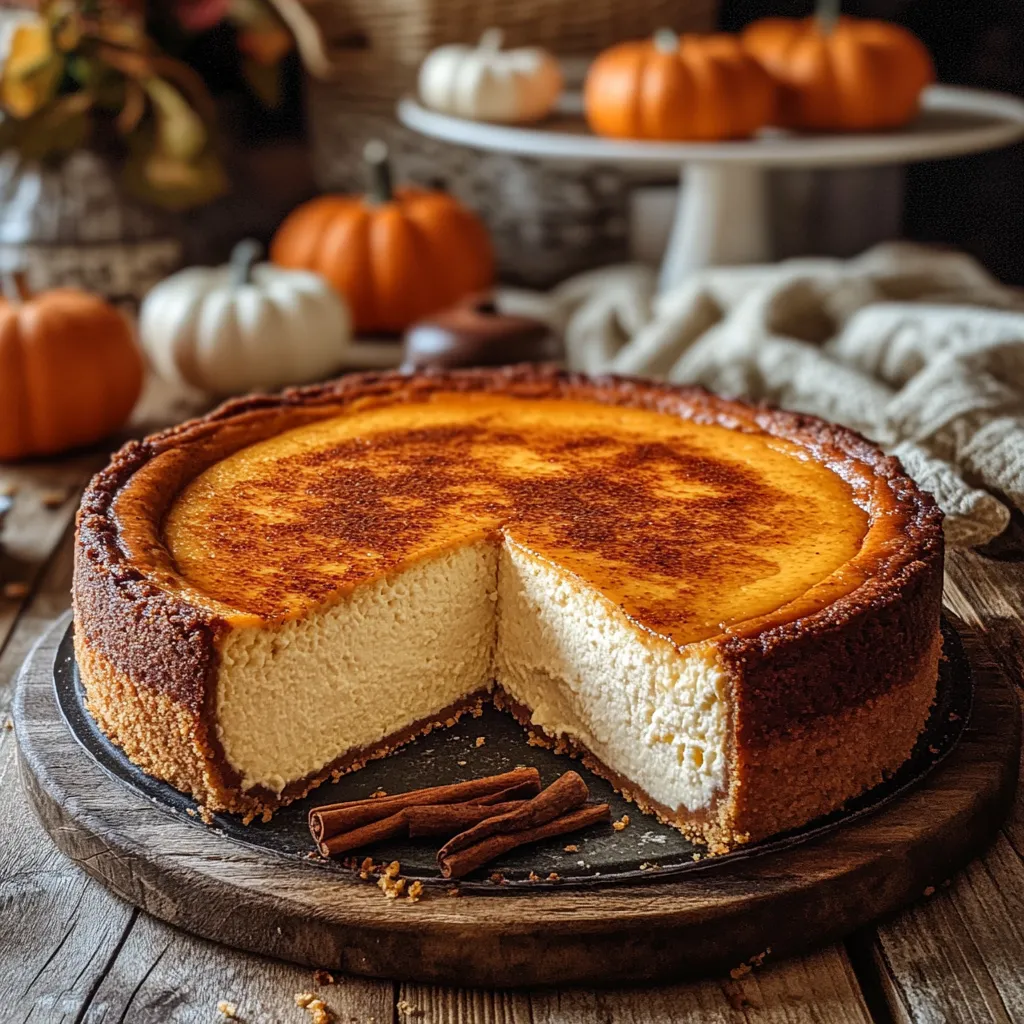
Cottage Cheese Pumpkin Cheesecake
Ingredients
Equipment
Method
- Preheat oven to 325°F (163°C).
- Mix graham crumbs, sugar, and butter until texture resembles damp sand.
- Press into springform pan and bake for 8–10 minutes. Let cool.
- Blend cottage cheese until smooth.
- Add pumpkin, sweeteners, eggs, spices, and cornstarch. Blend again until creamy.
- Pour over crust and smooth the top.
- Bake at 325°F for 45–55 minutes until center is just set.
- Turn off oven, crack the door, and let rest for 30 minutes.
- Chill in the fridge for at least 4 hours or overnight.
- Slice with a hot, wet knife for clean cuts.
- Serve chilled straight from the fridge for the best texture.
Notes
- Best made a day in advance—chilling overnight improves texture and flavor.
- For a gluten-free crust, use almond flour or gluten-free oats instead of graham crackers.
- To reduce sugar, swap brown sugar with a monk fruit sweetener or skip it if using maple syrup alone.
- Freeze leftovers by wrapping individual slices tightly; thaw in the fridge overnight for best texture.
- For portion control, bake the filling in a muffin tin to create mini cheesecakes.
